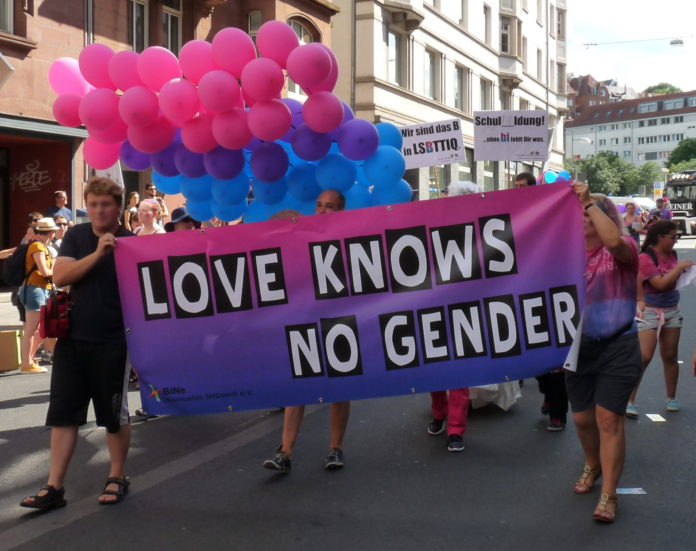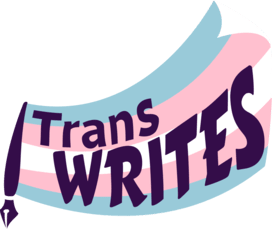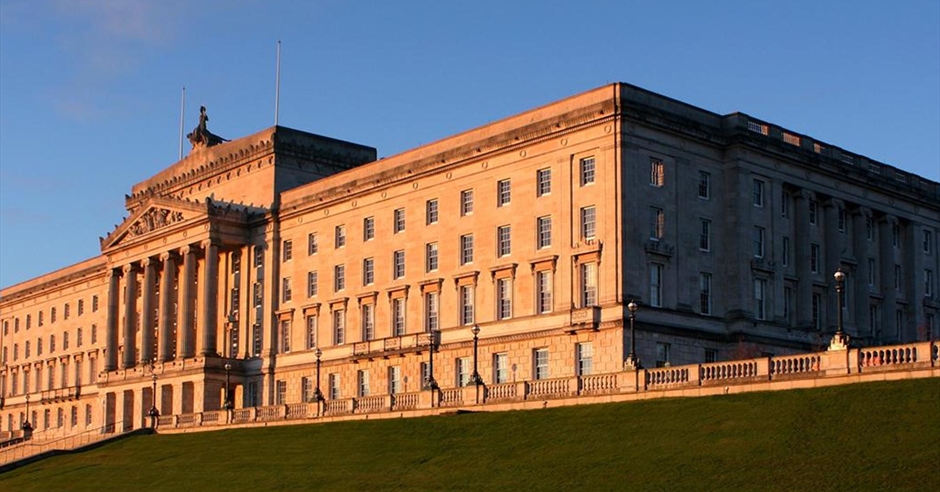
In 1990 ‘Bisexual Pride Day’ was declared on 23rd June at the first ‘National Bisexual Conference’ in San Francisco, US, with the Mayor “commending the bisexual rights community for its leadership in the cause of social justice.” 9 years later, the beginnings of Bi Visibility Day start to take shape.
In 1999, at the International Lesbian and Gay Association Conference in Johannesburg, South Africa, three bisexual rights activists announced ‘Celebrate Bisexuality Day’, this time on 23rd September, a combination of Freddie Mercury’s birth month, it being a weekend, and one of the activist’s birthdays.
That activist was Gigi Raven Wilbur, and 24 years later their words still ring true;
“Ever since the Stonewall rebellion, the gay and lesbian community has grown in strength and visibility. The bisexual community also has grown in strength but in many ways we are still invisible. I too have been conditioned by society to automatically label a couple walking hand in hand as either straight or gay, depending upon the perceived gender of each person.”
‘Bi Visibility Day’ as a title was used in Berkeley, California, US, in 2012, but also by Jen Yockney MBE here in the UK who promoted the celebration yearly. Jen was also awarded the first honour for services to the bi community, marking the first time the title “Mx” had appeared on the UK’s honours list.
Then in 2013 the government minister for Women and Equalities, Jo Swinson, stated;
“I welcome Bi Visibility Day which helps to raise awareness of the issues that bisexual people can face and provides an opportunity to celebrate diversity and focus on the B in LGB&T.”
1990 didn’t just mark the beginning of this occasion, it was also the year that The Bisexual Manifesto (“Anything That Moves: Beyond the Myths of Bisexuality (1990)”) was published. A document that bisexual and m-spec (multi-sexual/multi-attraction spectrum) folks still quote today in an attempt to reinforce the concept that bisexuality is not and has never been exclusionary of transgender and non-binary people.
Whilst you might expect such a body of work to be outdated, much like Wilbur’s comments back in 1999 it shows us how little has changed in terms of not only bisexuality itself but also people’s attitudes towards it.
The manifesto states:
“Bisexuality is a whole, fluid identity. Do not assume that bisexuality is binary or dougamous in nature; that we must have “two” sides or that we MUST be involved simultaneously with both genders to be fulfilled human beings. In fact, don’t assume that there are only two genders.”
33 years later and we still find ourselves having to constantly remind people of these very facts.
The intersection between bisexual communities and transgender communities has always been incredibly strong, with our activists noting many similarities between our struggles, as people fail to acknowledge the fluid nature of gender, sexuality and attraction despite our existence literally proving that none of these things exist in a binary measure.
As an activist my primary focus was always trans rights here in the UK, but as an openly bisexual person I have been afforded amazing opportunities to speak with many wonderful bi and m-spec activists at events like Bi Pride UK and panels held by Bi Survivors Network, Biscuit and The Bisexual Index.
Through speaking with not only notable activists but also members of our joined communities, and with my own experience of coming out as non-binary a few years ago (after living as a binary trans man for nearly two decades), I have noticed just how many similarities there are between being openly bi and being openly non-binary.
Take a look at these statements that many of us sadly hear all too often;
“You’re just confused.”
“Can’t you just make up your mind?”
“You’re just going through a phase, one day you’ll pick a side.”
In isolation, it is impossible to tell whether these are being said to someone because they’re non-binary, or because they’re bisexual. Our identities are considered to be transient, something that will one day be whisked away as a sign of maturity once we’ve committed ourselves to be confined to one small, rigid, box. Any suggestion to the contrary and we’re exposed to accusations of delusion.
33 years, that’s nearly as long as I have been on this planet, and we are still having to fight against erasure and discrimination because mainstream society is still determined to promote the fabrication that humankind cannot exist in a state of fluidity.
If you can’t narrow someone’s choices down to ‘just pick this one thing and commit to it’, they become harder to control. If you’re harder to control, you’re a threat to the status quo.
If the current demonisation of the trans community continues to be successful and our humanity is stripped away, it’s just a path towards an attempt to eliminate queerness as a whole. Folks often say, “Once you separate the T, the LGB is next.”
To be more accurate, the B is next. It’s already happening, it’s already considered acceptable in all communities to deny the unique struggles that bisexual people face, to play off our concerns as lesser than because we’re either not gay enough or not straight enough, or to claim that we are safe because we can “pass as straight.”
“Passing” never truly protected trans people from discrimination, and it doesn’t protect bisexuals either. The assumption that someone is cis, gay or straight is not a privilege, it is erasure, and it’s easy to eradicate people if you don’t see them.
Don’t just celebrate our bi visibility day for a day, week or even a month. See and fight for us every day.
This article was funded by LGBT+ Futures: Equity Fund is a two-year £786,000 partnership between Consortium and The National Lottery Community Fund, designed to help community-led and grassroot organisations supporting some of the most under-represented and marginalised LGBT+ communities. Read more here.










